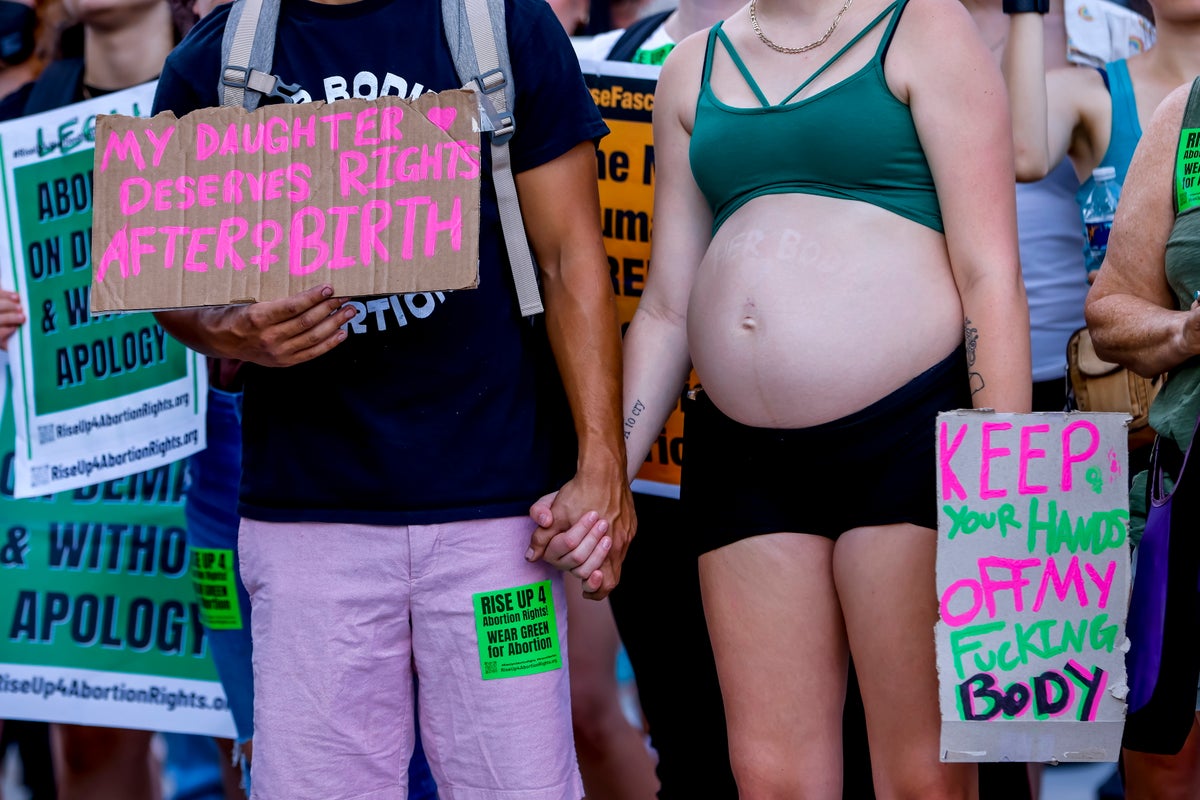
A new study from health policy researchers adds to a growing body of evidence linking anti-abortion laws and restrictions to higher rates of maternal and infant mortality.
An analysis from the Commonwealth Fund found that rates of maternal and infant deaths are significantly higher in states that have outlawed or restricted access to abortion compared to states that have preserved abortion access.
The report relied on the most recent data – from 2020 and earlier – for mortality rates and other poor health outcomes in each state, predating current state-level policies for abortion access in the wake of the US Supreme Court’s decision in June to revoke a constitutional right to abortion care.
The court’s decision that overturned Roe v Wade sparked a wave of anti-abortion laws in several states; more than a dozen states have effectively outlawed abortion in the wake of the ruling.
States with restricted abortion access had maternal death rates in 2020 that were 62 per cent higher than in states that have preserved access to care, the report found. Between 2018 and 2020, maternal mortality rates increased twice as fast in states that have implemented post-Roe abortion restrictions, according to the report.
Overall mortality rates among women and girls between the ages of 15 to 44 were 34 per cent higher in states with abortion restrictions than other states, the report found.
The Commonwealth study suggests the Supreme Court decision and subsequent state-level anti-abortion measures may have exacerbated those disparities.
The nation’s maternal mortality rate, defined by the US Centers for Disease Control and Prevention as the number of deaths from any cause related to pregnancy or its management, or within 42 days after a pregnancy is terminated, has easily outpaced the rates of other industrialised nations.
According to the CDC, 80 per cent of those deaths are preventable.
Commonwealth’s report also found that fetal or infant death rates within the first week of birth occurred at rates 15 per cent higher on average in states with restrictions than states with protections for abortion care.
Findings suggest that “making abortion illegal makes pregnancy and childbirth more dangerous” and “threatens the health and lives of all women of reproductive age.”
Commonwealth’s report also found that many US counties with more stringent anti-abortion policies are also considered “maternity care deserts.”
Last year, a similar study from a group of researchers at Tulane University found that states with more abortion restrictions correlated with higher maternal mortality rates between 2015 and 2018. A study from the University of Colorado estimated that a nationwide federal ban on abortion care could increase the nation’s maternal mortality rate by 24 per cent.
“Compared with their counterparts in other states, women of reproductive age and birthing people in states with current or proposed abortion bans have more limited access to affordable health insurance coverage, worse health outcomes, and lower access to maternity care providers,” Commonwealth researchers wrote.
“Making abortion illegal risks widening these disparities, as states with already limited Medicaid maternity coverage and fewer maternity care resources lose providers who are reluctant to practice in states that they perceive as restricting their practice,” according to the report. “The result is a deepening of fractures in the maternal health system and a compounding of inequities by race, ethnicity, and geography.”
The Supreme Court’s decision in the case of Dobbs v Jackson Women’s Health Organization is “devastating” to maternal healthcare, according to President Joe Biden’s domestic policy adviser Susan Rice.
The ruling “underscores that we need to keep battling relentlessly to protect and advance women’s maternal health,” she said on 13 December at the Centers for Medicare and Medicaid Services.
Earlier this year, the administration released a White House Blueprint for Addressing the Maternal Health Crisis, which intends to expand healthcare coverage, support lower-income patients with support during and after a pregnancy, and address biases in healthcare that prevent patients from getting the care they need.
The plan also called on states to extend postpartum Medicaid coverage to one year; the government health programme for lower-income Americans accounts for roughly 44 per cent of payments for birth-related services in states where abortion access is restricted, according to the Commonwealth report.







